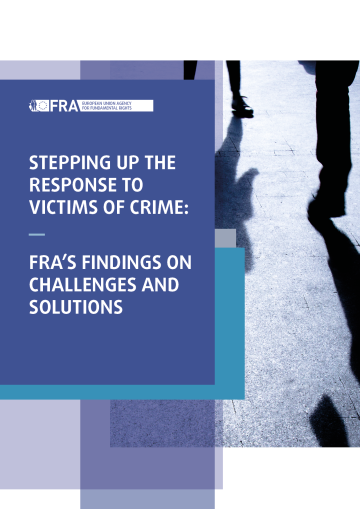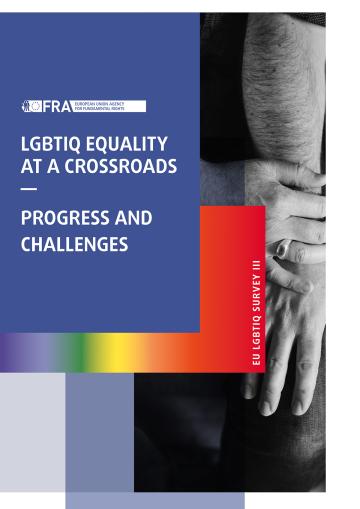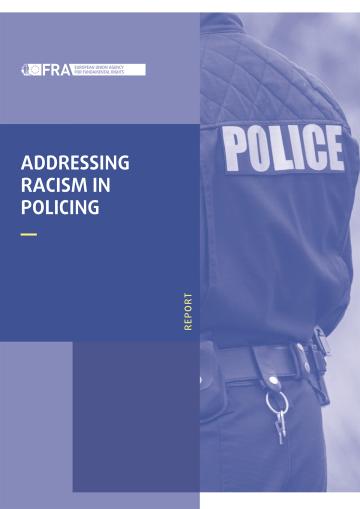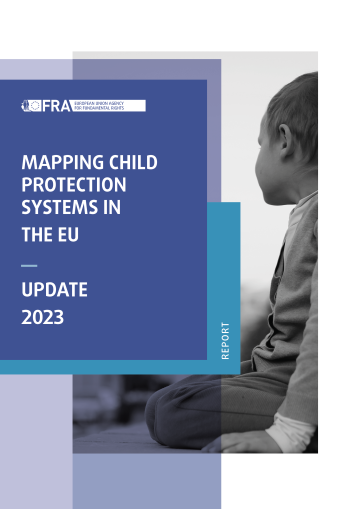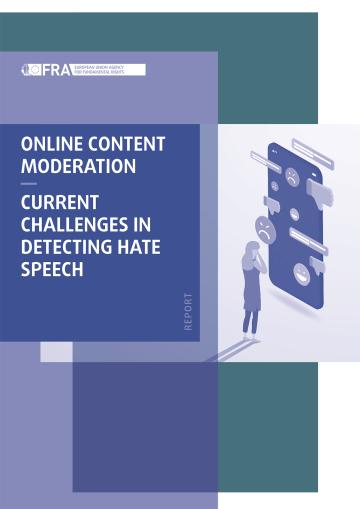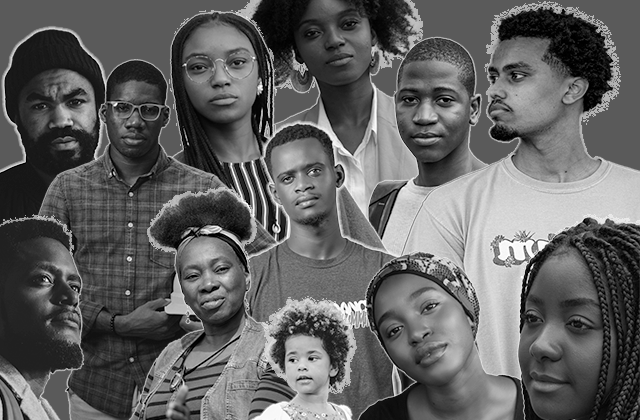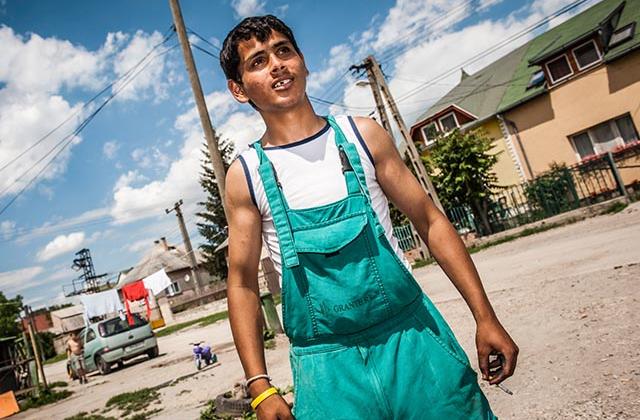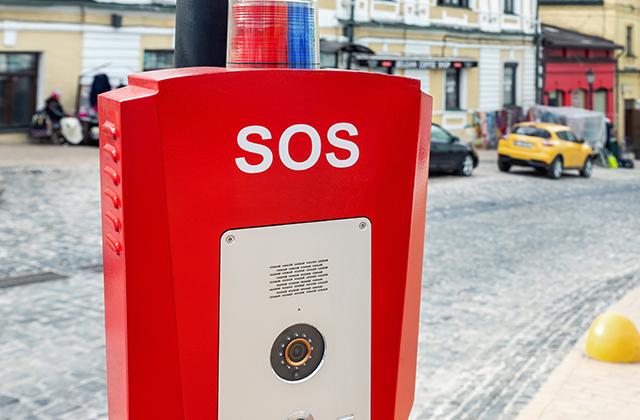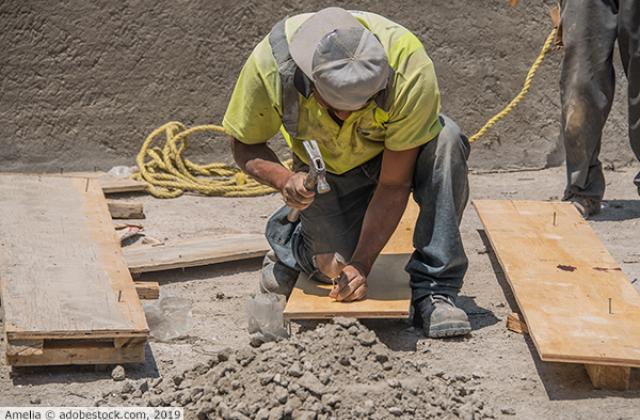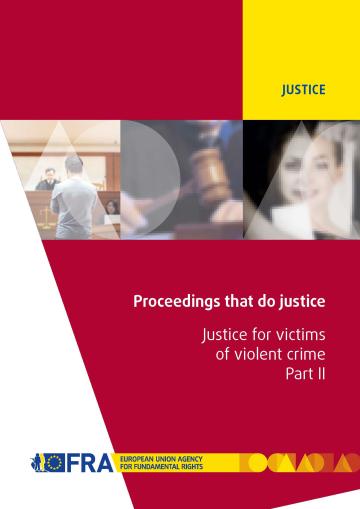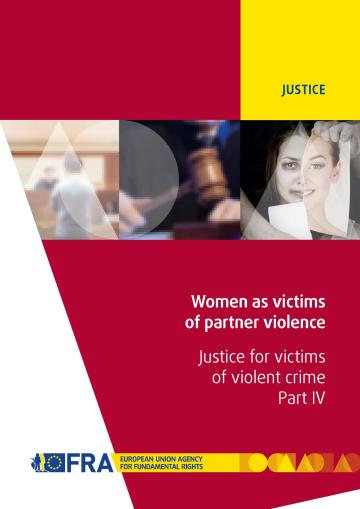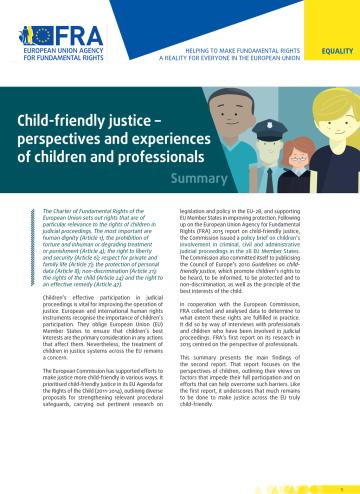This paper sets out some of the key challenges and concrete solutions in the implementation and enjoyment of victims’ rights that have emerged from FRA’s research over the past decade on how victims of crime have accessed their rights in practice across the EU. The findings are intended to inform and support the work of key stakeholders with respect to the revised Victims’ Rights Directive and related legislative files that address various victims’ rights. Those include the Directive on combatting violence against women and domestic violence, the Directive on preventing and combating trafficking in human beings and protection of its victims, the Directive on combating the sexual abuse and sexual exploitation of children and child pornography, the Directive on combatting terrorism, and the Compensation Directive.
Based on existing FRA data, the paper brings together key findings from FRA’s quantitative and qualitative research on victims of crime relating to three areas:
- Reporting crime
- Protection from secondary victimisation
- Victim support services.
The paper highlights challenges and solutions in each of these areas, drawing directly from FRA’s published work.
Empirical evidence concerning victims’ enjoyment of their rights in practice, and the challenges they face, emerges from data that FRA has gathered using a variety of methodologies; namely:
- Large-scale quantitative surveys collecting data from tens of thousands of victims (based on interviews in person or carried out online; some surveys covering all EU Member States and others a selection of countries); and
- In-depth qualitative research that involves the testimony of victims but also practitioners who deal directly with victims within the criminal justice system (e.g. police, prosecutors, judges, lawyers, victim support services).
See list of relevant FRA publications at the end of this section.
The solutions outlined in this paper, drawn from existing FRA findings, are based on practices in various EU Member States that have proven to be effective in responding to the practical needs of victims and to improving their ability to access their rights. These findings can assist the EU institutions and Member States in identifying actions that could be taken in these three areas to guarantee the rights, support and protection of victims of crime.
Millions of people in the EU fall victim to crime each year. Data from FRA’s Fundamental Rights Survey – the first EU-wide survey to collect comparable data on the general population’s experiences of, concerns about, and responses to different types of crime – showed that more than 22 million people experienced physical violence in one year in the EU-27 [1]Estimate based on the results of the survey relative to the EU’s population.
(Crime, Safety, and Victims’ Rights – Fundamental Rights Survey, 2021).
However, according to the survey, the majority of crime incidents were not reported to the police (64 % of victims of physical violence did not report the most recent incident to the police), a phenomenon that is replicated in different crime victimisation surveys at the level of individual countries. Non-reporting of incidents means that most victims do not go on to receive support or access justice, despite violations of their rights. As a result, perpetrators enjoy impunity – with an overall cost not just to victims, but to society at large. This data, which includes respondents’ reasons for not reporting crime, highlights that EU Member States’ responses to victims in practice – to meet their needs and ensure access to justice – falls short of the legal guarantees of victims’ rights under the EU Charter of Fundamental Rights (the Charter) and the Victims’ Rights Directive, among other legal instruments. This gap between the ‘law in the books’ and victims’ lived experience of their rights in practice is something that FRA’s data has consistently highlighted in both its quantitative and qualitative research on victims’ rights, which will be evidenced in this paper.
Ultimately, ineffective responses by Member State authorities in responding to victims of crime have severe and lasting negative consequences for victims. Respondents to many FRA surveys over the years who have been victims of violent crime have highlighted the significant long-term effects of their experiences of victimisation, including:
- Fear of leaving the house or visiting certain places: according to the Fundamental Rights Survey of the general population (Crime, Safety, and Victims’ Rights – Fundamental Rights Survey, 2021), 37 % of women in the EU-27 who have experienced physical violence and/or harassment deliberately avoid situations they perceive as presenting a risk of physical or sexual assault or harassment. Separately, 22 % of people of African descent who have experienced racist violence informed FRA that they were afraid to leave the house or visit places as a result of their victimisation (Being Black in the EU, 2023). For respondents to FRA’s 2024 LGBTIQ survey who had experienced physical or sexual violence, this figure was around one in two (52 % - LGBTIQ at a crossroads: progress and challenges, 2024).
- Negative psychological consequences: nearly one in three (30%) victims of physical violence interviewed for FRA’s general population fundamental rights survey experienced anxiety in the aftermath of their victimisation (Crime, Safety and Victims’ Rights – Fundamental Rights Survey, 2021). More than nine in 10 victims – both women and men – say that they experienced psychological consequences if the incident of physical violence included acts that were of a sexual nature. 61 % of victims of racist violence felt depression or anxiety, women (71 %) to a higher degree than men (51 %) (Being Black in the EU, 2023), while the majority (63 %) of victims of physical or sexual attacks who responded to FRA’s survey LGBTIQ at a crossroads: progress and challenges, 2024 indicated experiencing negative psychological consequences, such as depression or anxiety.
Incidents of crime also lead to costs borne by society or victims themselves, in terms of interventions, including, among others, medical, criminal justice, victim support, emergency housing, counselling and other services (as highlighted in FRA’s report Crime, Safety and Victims’ Rights – Fundamental Rights Survey, 2021, from the Agency’s Fundamental Rights Survey). Victims can also lose income due to time taken off work. Research by the European Institute for Gender Equality (EIGE), 2021 estimates that the costs related to gender-based violent crime across the EU amounts to EUR 366 billion per year.
Not all people are affected equally by or worry about crime. For example, FRA’s general population Fundamental Rights Survey highlighted that women (young women in particular), people with lower education levels, people who are unemployed or struggle to ‘make ends meet’, people whose disability or health limits their usual activities, people born outside the EU, and ethnic minorities, all tend to worry about crime at higher rates (Crime, Safety and Victims’ Rights – Fundamental Rights Survey,2021). To take a particular example, 50 % of persons with disabilities (defined in the survey as those who have severe limitations on their usual daily activities) expressed concern about becoming a victim of crime, compared with 36 % of those without limitations. Actual experiences of physical violence and harassment were also higher for persons with disabilities. For example, 17 % of persons with disabilities experienced physical violence in the 5 years before the survey, compared with 8 % of those without disabilities.
Collecting robust and comparable EU data from EU Member States relating to victims’ rights, and covering the experiences of all victims, including those who are most marginalised, is an essential horizontal measure for informing policy and law-making on the subject. An intersectional approach to collecting data, disaggregated according to relevant indicators and personal characteristics, is important in this regard. When carried out regularly, data collection provides much-needed evidence about whether adopted measures and policies are effective in practice over time, including, for example, a baseline trend of whether more victims are reporting to the police, and – where data allows – which type of victims and which type of crime is being reported more.
Survey and other data on crime victims’ experiences will increase EU institutions’ and Member States’ understanding about victims’ rights in practice and assist them in monitoring progress, and, at the same time, will raise awareness about gaps related to the actual enjoyment of victims’ rights that need addressing. It will also help policy and lawmakers to take important decisions such as where to allocate often limited resources.
Setting out explicit obligations for data collection for the different entities working with victims at national and EU level can also help to coordinate this work and simplify data collection tasks. Obligations for data collection at Member State level are limited, but some progress has been noted in recent years. For example, Article 44 of the Directive on combatting violence against women and domestic violence sets out clear obligations for Member States to collect, develop and disseminate statistics on violence against women or domestic violence, which should be disaggregated by sex, age group (child/adult) of the victim and of the offender and, where possible and relevant, the relationship between the victim and the offender, and type of offence. Such data are key towards supporting the monitoring of the prevalence and trends of violence against women and domestic violence. It is also key in designing new policy strategies in this area, via statistics that can be compared, assessed and analysed at EU level.
At present, Member States’ data collection on all victims’ experiences of crime, which extends beyond officially reported and recorded crime rates – such as crime victimisation survey data collection – remains limited to certain Member States and is often undertaken on an infrequent basis. In particular, FRA’s survey data collection is a rich source of data for Member States and EU institutions, which can be used as the basis to develop and inform policy on victims of crime.
|
BRIEF LEGAL CORNER
The main source of victims’ rights in EU primary law is Article 47 of the Charter. It grants victims a right to an effective remedy and fair trial. Under EU secondary law, the Victims’ Rights Directive grants a wide range of rights to all victims of crime to ensure that they receive appropriate information, support, and protection, and are able to effectively participate in criminal proceedings. Other sector-specific Directives focus on selected categories of victims by introducing additional safeguards needed to ensure that victims’ rights can be effectively exercised in practice. Those include, for example, the EU Directive to combat violence against women and domestic violence (adopted in May 2024). [2] EU Member States are obliged to “provide remedies sufficient to ensure effective legal protection in the fields covered by Union law”, under Article 19 of the Treaty on European Union. Hence, for any of the rights granted by the Victims’ Rights Directive or other sector-specific Directives on selected categories of victims, a corresponding effective remedy must be in place, allowing victims to assert their rights whenever they can tenably claim a violation. In July 2023, the European Commission published a legislative proposal proposing amendments to the Victims’ Rights Directive. The amendments relate to five main issues which were identified in the Commission’s 2022 evaluation of the Directive as needing more attention for effective implementation of victims’ rights: access to information, effective protection, specialist and targeted support, improved participation in criminal proceedings and facilitated access to compensation. Negotiations on the legislative file are ongoing at the time of writing. |
|
FRA research on victims: examples The quantitative FRA survey findings in this report are based on responses from thousands of respondents – using standardised comparable questionnaires across Member States involved in each survey. Among other questions, the questionnaires ask about crime victimisation, reporting to the police and other organisations, and reasons for not reporting crime. Every FRA survey transparently reports its methodological approach, and offers unique, robust data with which to inform policy and monitor Member States’ obligations to uphold the rights of crime victims. FRA’s quantitative surveys – capturing people’s experiences of crime – include:
FRA data explorer: data visualisations on FRA’s website FRA’s interactive data explorer provides quick access to data compiled by FRA. While it is beyond the scope of this paper to present country-specific data, this tool allows users to filter data by theme, country and dataset. FRA’s qualitative research on victims’ experiences – key publications include:
Examples of relevant FRA opinions from FRA’s 2023 report ‘Underpinning Victims’ Rights: Support services, reporting and protection’ Opinion 2, relating to Chapter 1, ‘Facilitating reporting’: Member States should consider measures to enhance structures that facilitate crime reporting. The specific circumstances of particular victim groups, such as women who are victims of (intimate partner) violence, or victims of hate crime, should be accommodated. This should include, among other things, concrete measures to enhance trust in law enforcement, and setting up alternative reporting options, such as third-party reporting. Where third-party reporting mechanisms exist, the procedural rules should ensure that their use is not unnecessarily limited in practice, relevant measures should be put in place to encourage their systematic use, and third-party bodies should be trained to respond effectively to the rights and needs of victims. In addition, Member States should ensure there are further specific measures in place, such as proactive monitoring by independent bodies, to give victims living in institutional settings a practical way to safely report their victimisation. Opinion 3, relating to Chapter 2, ‘Ensuring protection against secondary victimisation’: Member States are called on to find ways to ensure that all victims can reliably benefit in practice from protection measures, as needed, in accordance with Article 23 of the Victims’ Rights Directive. Member States should ensure that, in line with Article 25 of the Victims’ Rights Directive, police officers are sufficiently trained to protect victims from repeat and secondary victimisation. Victims should also have effective judicial remedies at their disposal if they want to challenge the scope or lack of measures in place to protect them from secondary and repeat victimisation, in accordance with Article 47(1) of the Charter. Member States are also encouraged to exchange and draw on promising practices that exist in relation to certain categories of victims, such as the Barnahus model, with respect to prevention of secondary victimisation of child victims. Opinion 1, relating to Chapter 3, ‘Guaranteeing effective victim support services’: Member States should ensure that there is a state body responsible for ensuring that sufficient victim support organisations exist, that performance standards for such organisations are clearly defined, and that compliance with these standards is monitored to secure the delivery of victims’ rights in practice. In this regard, Member States should consider introducing measures to strengthen and further develop the system of organisations providing victim support services. This implies, in particular, working towards a comprehensive, joined-up structure of victim support services serving different groups of victims. Improving the coordination of support services and increasing the level of public funding to provide adequate support to meet the needs of victims of different types of crime can help achieve this. FRA stands ready to support Member States in developing performance standards and shaping cooperation. |
